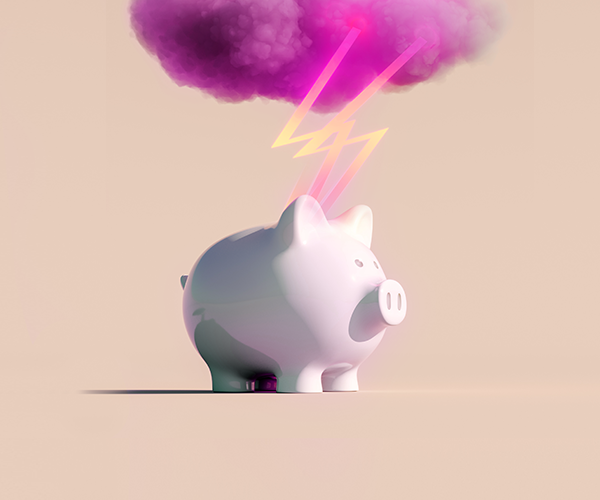Market Ethos
April 15, 2024
Don’t count out the loonie
Sign up here to receive the Market Ethos by email.
The CAD vs USD exchange rate has been on the move over the past few months, to the detriment of the loonie. After rising into year-end to finish 2023 at about 75½ cents, the CAD has fallen close to 72½ cents. That has the CAD trading near the lower end of its recent range. Ah, remember the days when the loonie was on par with the U.S. dollar? Disney trips felt cheap, cross border shopping was all the rage and oil carried an average price of $96/bbl. Huh, with oil moving from the $70s to high $80s, that sure doesn’t match a 72½ cent loonie. Are we no longer a petrol currency? Maybe a decade of underinvestment and uncertainty around takeaway infrastructure can change a currency’s stripes. Or maybe there are other factors that are bigger than the oil impact on our currency exchange with the almighty dollar.
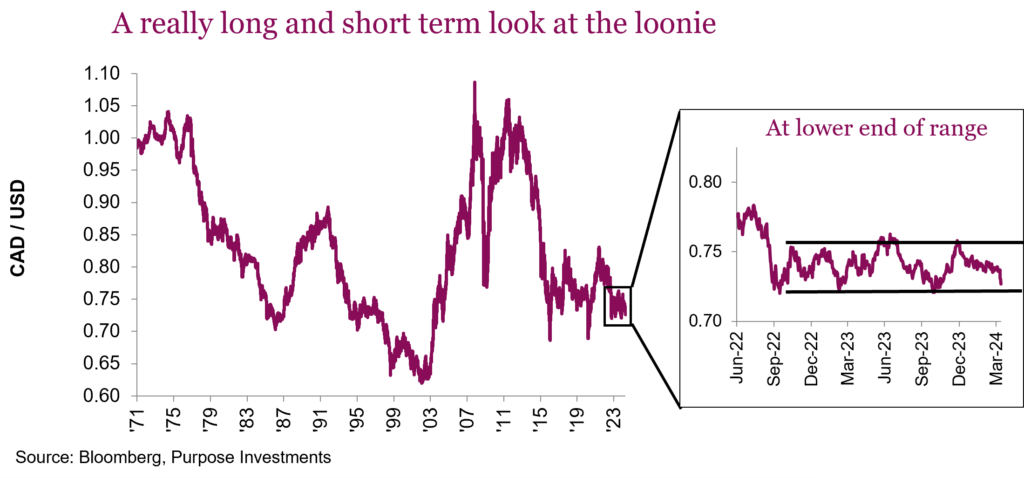
The weakness in the Canadian dollar is pretty easy to explain. U.S. inflation has ticked higher, as has American economic data. Meanwhile in Canada, the opposite trends are apparent. Just look at the Citigroup economic surprise indices for each country. This rolling index measures economic data releases relative to consensus forecasts, weighted based on the importance of each data release. Canada has averaged about -36 while the U.S. has been +40 so far in 2024. Not surprisingly, this has translated into a widening spread on 2-year yields, the tenor of yields most impactful to spot currency exchange rates. U.S. 2-year yields are 4.89% compared to 4.17% in Canada, roughly the widest spread over the past decade. This has also translated into expected central bank rate cuts. In January, the market consensus was pricing in a whopping 7 cuts (25 bps each) for the U.S. Fed Funds rate while Canada was forecast to cut 5 times. Fast forward to today, they are tied at 2½ cuts each.
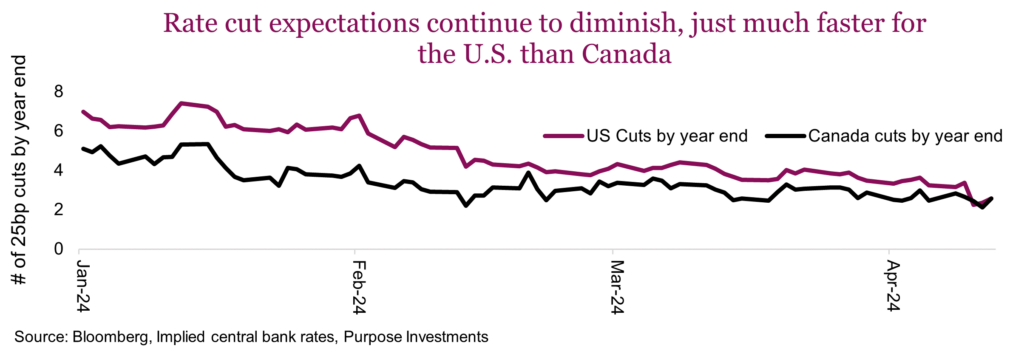
Yet flying in the face of a weaker CAD are commodity prices. While perhaps not as strong as it was historically, the CAD dollar usually does well when commodity prices are rising, and global economic growth is improving. This is clearly not the case of late and one would even argue this is a material disconnect. The chart below is the CRB commodity index and the price of oil, compared to the CAD/USD. Normally there is a pretty decent correlation between these factors, but not lately.
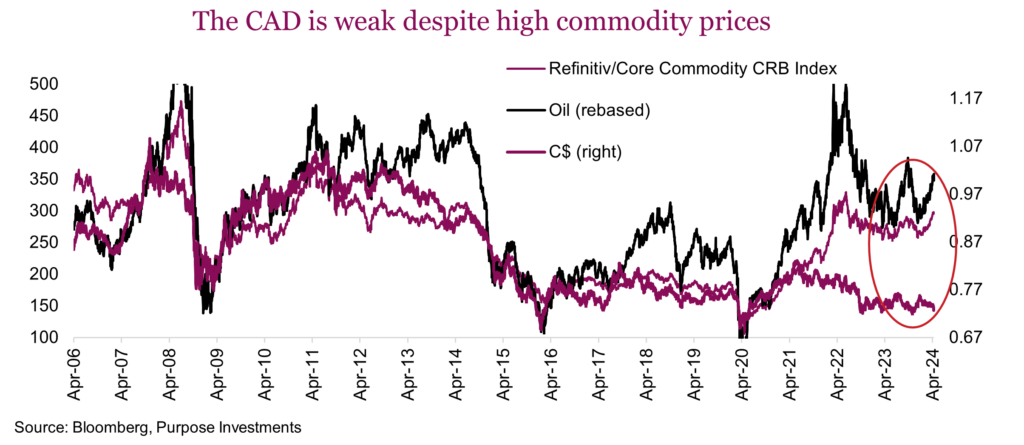
One important consideration is that the recent currency move in the loonie is more about the USD strength than CAD weakness. While the CAD has lost about 5% against the USD so far this year, it has been relatively flat against other major currencies such as the yen and euro. This really points to USD strength due to higher inflation, tempering of rate cuts and better relative economic growth data.
But at 72½ cents, is there value in the loonie? It is starting to look that way. No denying the CAD is undervalued, as highlighted in the purchasing power parity chart below. This doesn’t mean it will fix this undervaluation anytime soon; there are fast drivers of currencies (most of the previously mentioned factors) and then there are slow drivers. Valuation is a slow driver; so are deficits. Sure, everyone runs deficits, that isn’t anything new. But the U.S. has taken deficits to new levels outside a recession/war/pandemic environment. At some point that will be a negative for the USD relative to more fiscally responsible national currencies. Not saying Canada is fiscally responsible but they are, at least on a relative basis compared to the U.S.
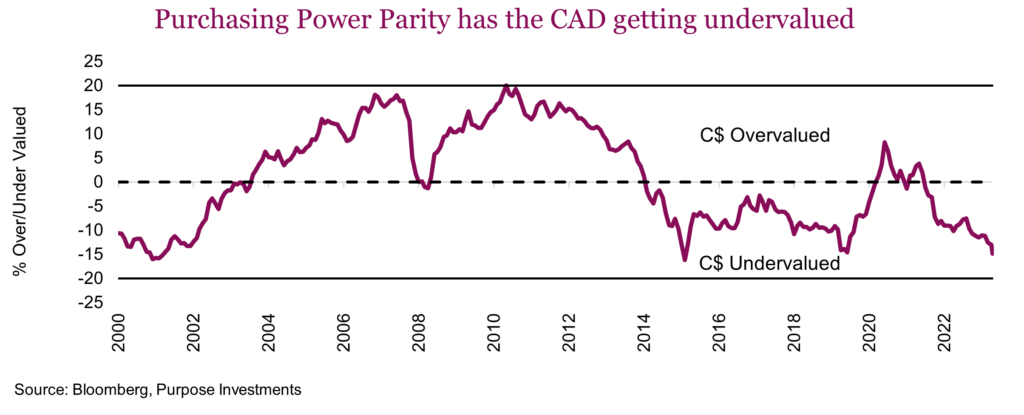
Final thoughts
Currency exposure is an important component of managing multi-asset portfolios. We remain largely unhedged with our USD exposures which has been the right call. Generally we like being unhedged as the USD can be a powerful diversification tool for Canadian portfolios. However our conviction on this is waning, and the further the CAD depreciates, the more the risk return trade-off improves for hedging. It’s not there yet, but it is starting to look rather interesting.

